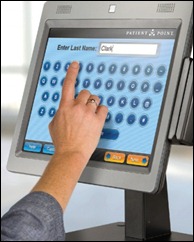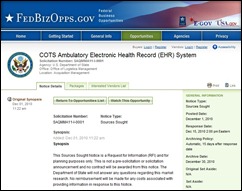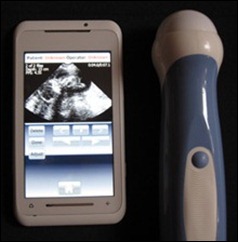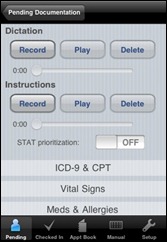News 12/9/10
The 20-physician South Carolina Oncology Associates integrates its GE Centricity PM system with Kryptiq’s Online Bill Pay.
HealthPartners (MN) expands its online clinic services to Wisconsin. For $40 or less, patients in either Wisconsin or Minnesota have access to online consults with nurse practitioners using HealthPartners virtuwell.com program.
Berkshire Health Systems (MA) deploys Allscripts EHR and PM for its 108 providers and will offer a hosted and support option for 300 affiliated physicians.
Across the pond, a UK-based supermarket chain plans to add about 200 in-store medical practices. Sainsbury supermarkets will offer the space at no charge, though some GPs are critical. The chairman of the Royal College of Practitioners is quoted as saying, “Supermarkets should stick to selling fruits and vegetables.”
The Rhode Island RECs adds Ingenix CareTracker as a qualified EHR for doctors in its state. Ingenix, by the way, just announced that its ClaimsManager software is available in a cloud-based version, targeting small and mid-sized physicians offices with fewer than 50 doctors.
Clark & Daughtrey Medical Group (FL) and Central Florida Gastroenterology contract with PatientPoint to automate registration through self-service check-in kiosks.
Just one month after announcing its pending purchased by McKesson, US Oncology tries to raise awareness for its iKnowMed practice management system with this recent press release. US Oncology stresses that iKnowMed is a customized version of Henry Schein’s MicroMD product, perhaps to emphasize it’s not offering an untested product. I find it mildly curious there’s no mention of the McKesson deal.
The great folks at Hayes Management Consulting sent me a virtual holiday greeting, saying they are making chartable donations this year in lieu of cards. I am sure Hayes’ contributions are much appreciated by the Toys for Tots Foundation, Massachusetts General Hospital Charlestown Health Center’s Pediatric Patients, and Susan G. Komen for the Cure.
Physician practice consulting firm Equation acquires competitor HealthCare Business Consulting of Baton Rouge, LA. The purchase expands the marketing reach of the Salt Lake City-based Equation.
McKesson says Practice Partner, Medisoft Clinical, Lytec MD, and Horizon Clinicals are all now ONC-ATCB certified. McKesson has its share of detractors, but I find it commendable that they seem to be trying to take care of their client base, even if that means maintaining multiple legacy systems.
Looks like the pending 25% pay cut from Medicare may be pushed back at least another year. Lawmakers are leaning towards a 12-month reprieve, giving the incoming Congress time to come up with a new payment policy based on care quality.
The administrator at Birmingham Heart Clinic (AL) says its use of Greenway’s PrimeSUITE EHR helped the clinic earn a $70,000 PQRS bonus from CMS.
Adding interactive forums to online health programs reduces member attrition while also saving program costs compared to face-to-face coaching. In other words, we’ve become a society that loves our social media and need our online world to motivate us, regardless if we are trying to improve our health, find a spouse, or raise chickens.
Physicians don’t really trust hospitals, even though they view hospital alignment as a way to relieve their administrative and financial burdens. Two-thirds of cardiologists and 48% of primary care physicians are interested in being employed by hospitals, citing an improved work-life balance as the primary draw.





















The article about Pediatric Associates in CA has a nugget with a potentially outsized impact: the implication that VFC vaccines…